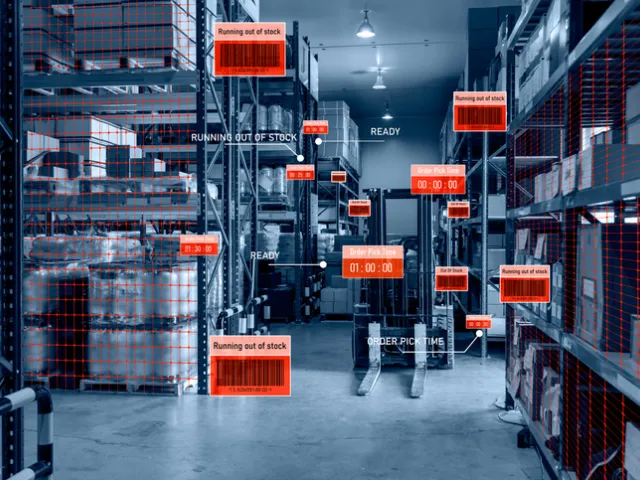Table of contents
Overview
The SOM Aggregation Update transaction is an XML-based message used to record the aggregation of parent-child packaging relationships between serialized units (SGTINs) and containers (SSCCs). This transaction complies with GS1 EPCIS 1.2 standards and ensures that aggregation events are traceable, secure, and compliant with DSCSA/global track and trace regulations and internal SOPs.
Executed with TraceLink’s Serialized Operations Manager (SOM) platform, this transaction helps ensure that serialized units are accurately aggregated and linked to downstream supply chain events such as product release, shipment, or sampling.
Key Use Cases
- Document correct parent-child packaging relationships in serialization repositories between serialized product units and their containers.
- Maintain compliance with DSCSA, EU FMD, and global serialization regulations.
- Improve operational efficiency during shipment, receipt, and inventory management processes by maintaining correct product identity relationships within containers that are scanned.
- Prevent discrepancies in downstream scanning, verification, or decommissioning.
- Enable traceable, auditable changes to serialized product packaging structures.
Data Elements Included
An EPCIS 1.2 – SOM Aggregation Update transaction includes:
- Event Type: AggregationEvent.
- Parent Identifier: SSCC of the case or pallet being updated.
- Child Identifiers (EPCs): SGTINs or lower-level SSCCs being added or removed.
- Event Time and Time Zone: Timestamp of the update, including time zone offset.
- Read Point: Location where the aggregation change occurred (e.g., QA station, warehouse).
- Business Location: GLN or internal code of the facility performing the update.
- Business Step: Typically "aggregation" or "rework" depending on context.
- Disposition: Optional field to indicate product state (e.g., “packed”, “repacked”).
- Reason Code (optional): Code explaining why the update was made (e.g., “QA_REWORK”).
- Transaction ID (optional): Unique identifier for the aggregation update event.
- Digital Signature (optional): Ensures data integrity and non-repudiation.
- Comments or Notes (optional): Free-text for packaging or QA notes explaining the change.
Benefits of EPCIS 1.2 – SOM Aggregation Update
- Maintains accurate aggregation hierarchies.
- Prevents downstream errors during verification, decommissioning, or returns.
- Ensures compliance with serialization and traceability regulations.
- Provides a traceable record of aggregation changes for audit readiness.
- Links aggregation events and identifies to compliance reporting and track and trace data exchange actions.
- Supports rework, quarantine, and repackaging workflows.
Business Process: EPCIS 1.2 – SOM Aggregation Update
The SOM Aggregation Update transaction supports:
- Inventory Management: Reflects accurate packaging hierarchy for serialized inventory.
- Product Serialization & Traceability: Maintains up-to-date parent-child relationships.
- Quality, Risk, and Recall Management: Documents aggregation changes.
- Track and Trace & Government Compliance: Ensures serialized data integrity for regulatory compliance.
- Returns and Reverse Logistics: Supports accurate processing of returns by aligning aggregation data.
How TraceLink Supports EPCIS 1.2 – SOM Aggregation Update
TraceLink’s Opus Platform, powered by B2N Integrate-Once™, supports secure and compliant aggregation updates by:
- Capturing EPCIS 1.2-compliant aggregation events with full serialization context.
- Allowing users to add or remove child EPCs from parent containers as needed.
- Integrating with QA, packaging systems, and warehouse systems for real-time updates.
- Logging all changes for traceability, audit readiness, and regulatory reporting.
- Ensuring secure communication with optional digital signatures and encryption.
Explore More Serialization & Compliance Capabilities
- EPCIS 1.2 – SOM ESM Void Shipment: Cancel previously recorded shipments.
- EPCIS 1.2 – SOM ESM Sales Shipment: Record serialized product shipments.
- EPCIS 1.2 – SOM Take Product Sample: Record serialized product removal for QAsampling.
- EPCIS 1.2 – SOM ESM Decommission: Deactivate serialized units flagged for removal.
Need Help Implementing EPCIS 1.2?
Contact Us to learn how our OPUS Platform and B2N Integrate-Once™ model can help you manage aggregation creation/updates, maintain serialization accuracy, and ensure compliance across your pharmaceutical supply chain.








